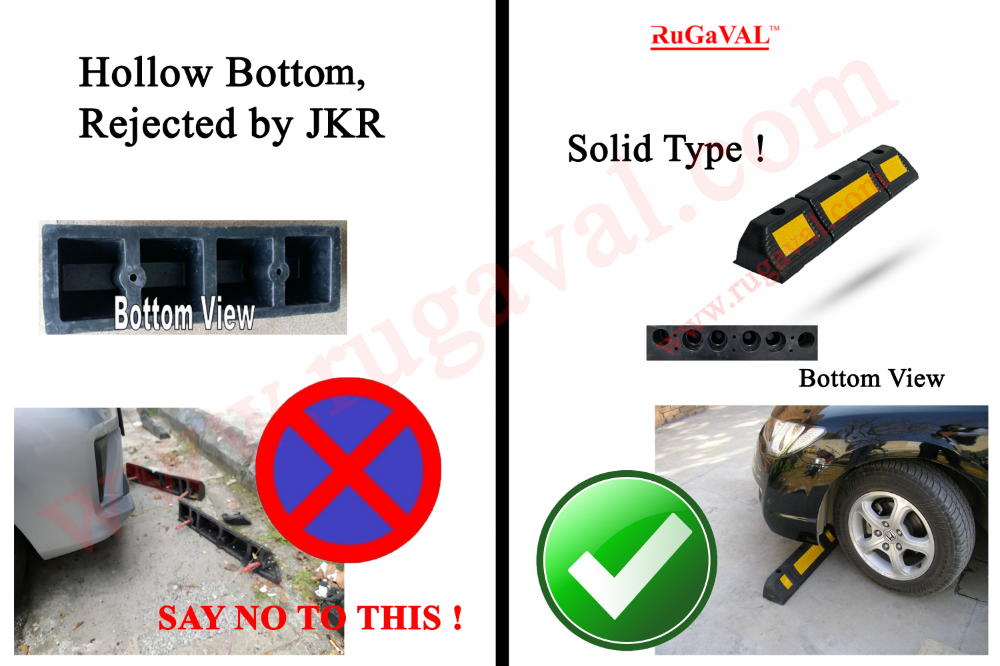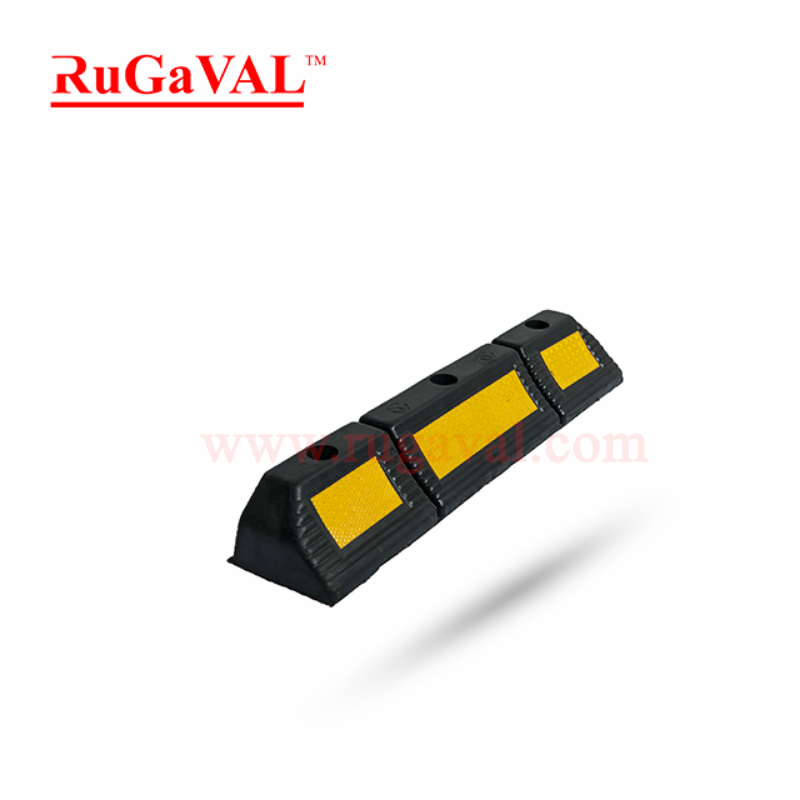Product Description
Wheel Stops | Rubber Wheel Stoppers | Important of Wheel Stops
5 THINGS YOU NEED TO KNOW BEFORE BUYING WHEEL STOPPER
Wheel stops are useful traffic management devices that can be used to create a boundary for parking vehicles. The slightly raised obstruction acts as a handy reminder for the driver, and it lets them know that they need to reconsider their actions. When a driver is alerted in this way, you can prevent collisions and injuries to nearby pedestrians. This is why you may have seen wheels stops in Perth locations, such as apartment parking areas, schools car parks, medical facilities, and shopping areas. Anywhere that has a high volume of cars that need to park will benefit from the advantages of wheel stops. Here are five things that you need to know before you buy wheel stops for your location.
1. Key Features of Wheel Stops
Rubber Wheel Stopper are easy to install because they are fixed directly to the surface, and you don’t need specialised tools or fixings. They should be weatherproof, oil and heat resistant, and the colours shouldn’t fade over time. Many wheel stops have reflective colours and/or markings to improve visibility at night or in low light conditions. The main purpose of a wheel stop is to protect walkways and cycle lanes from an intrusion from a slow-moving car. A wheel stop is no substitute for a bollard or other protective measure; it’s main purpose is to alert the driver to an action that’s inadvisable and that could cause harm or damage.
2. Different Wheel Stop Materials
There are four main materials used for wheel stops; they are rubber, plastic, metal, and concrete. Concrete wheel stops are for heavy-duty applications, and they are often found in warehouses and industrial settings. Metal wheel stops have fallen out of favour in recent years due to the adoption of plastic and rubber wheel stops. For this reason, we will only look at the two most popular material types here, rubber and plastic.
Rubber wheel stops are made from 100% recycled rubber, and they are fitted with reflective panels to improve visibility. They are well suited to parking areas, factories, and warehousing facilities. A rubber wheel stop is an extremely durable, environmentally friendly, and economical option.
A plastic or more accurately Polyethylene wheel stop is a strong and durable option available in a wide variety of colours and designs. These wheel stops give you an attractive clean look, and they will not chip or crack. Like a rubber wheel stop, these wheel stops can be installed by a single worker using standard tools.
3. Other Wheel Stop Uses
We’ve already looked at the main purpose of wheel stops, but there are many ways that they can be used in a variety of different locations. Let’s take a look at four ways that you can use wheel stops that you may not have thought about before.
Storefronts: A great deal of customer parking at retail locations is in the vicinity of large storefront windows. In these types of areas, accidents are more common than you might imagine and these types of collisions can result in a great deal of damage. Installing wheels stops between a storefront and a parking area can give that last warning to the driver that could make all the difference.
Residential: Driving home at the end of a hard day is when many of us lose concentration, and this can lead to a low-speed collision when parking. Installing a wheel stop at the end of a garage, driveway, or parking bay can give the driver a little reminder that they need to stop and park.
Boundaries: Installing one or more wheel stops at a boundary edge or along a fenceline can prevent a car from overparking and intruding on pedestrian walkways. This will help to protect property, but more importantly, it will help to prevent vehicular accidents that could injure pedestrians.
Uneven Areas: A wheel stop is a handy way to prevent vehicles from moving on a slope or uneven area. Installing a wheel stop in a recreation area will also help to designate safe separated parking spaces between cars.
4. Understanding the Benefits of Wheel Stops
Hopefully, we’ve managed to demonstrate the usefulness of wheel stops, but let’s look at eight benefits for your location.
- There are a number of wheel stop types available in different materials to suit your needs
- Wheel stops are a passive and economical way to manage traffic
- Because of their reflective colours wheel stops are highly visible during the day and night
- They are easy to maintain and resistant to cracking, corrosion, and crumbling
- A modern wheel stop is easy to install without specialised tools by a single worker with no specialised training
- Rubber wheel stops are an envrionmental friendly options because they are made from 100% recycled rubber
- A wheel stop will not damage a vehicle that has a lower front end
- They can be fixed in place as a permanent or temporary solution as required
5. Essential Wheel Stop Considerations
Every wheel stop you purchase should come with the necessary fixing to install the stop on your chosen surface. However, the fixing that you need may vary depending on the surface where the wheel stops will be installed. This is particularly true with concrete or gravel surfaces, and it’s important to check with the supplier or manufacturer before you make a commitment to buy.
It’s a great idea to choose wheel stops that are available in different colours. This will allow you to use the wheel stops to designate different areas at your location. As an example: yellow wheel stops could designate standard parking areas, but blue wheel stops could be used in your disabled parking spaces.
Contact Rubber Wheel Stopper Specialist www.rugaval.com
Contact Details
Wheel Stops | Rubber Wheel Stoppers | Important of Wheel Stops
| Supplier | : | Rugaval Rubber Sdn Bhd |
| : | rugavalrubber@gmail.com | |
| Phone | : | 60351918961 |
| Fax | : | 60351915961 |
| Location | : | Selangor, Malaysia |
Enquiry Box
Other Products




 Loading...Please Wait.
Loading...Please Wait.